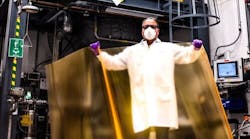Effective August 1, 2008, gallium arsenide is included in the Proposition 65 list (see OEHHA website). Proposition 65, the Safe Drinking Water and Toxic Enforcement Act of 1986, was intended by its authors to protect California citizens and the State's drinking water sources from chemicals known to cause cancer, birth defects or other reproductive harm, and to inform citizens about exposures to such chemicals.
California's statute states that “no person in the course of doing business shall knowingly and intentionally expose any individual to a chemical known to the state (California) to cause cancer or reproductive toxicity without first giving a clear and reasonable warning…”
So what is the potential impact on the LED industry? Not much, we suspect, beyond a requirement for additional labeling. Gallium arsenide (GaAs) has been around for years, and GaAs-based devices are found in a wide range of optoelectronic and electronic products, such as lasers for CD and DVD players, and RF power amplifiers in mobile phones.
Older aluminum gallium arsenide (AlGaAs) LEDs use GaAs as a starting material, and the same applies to high-brightness red and orange LEDs based on the aluminum gallium indium phosphide (AlGaInP) material system. However, many AlGaInP LED processes involve the removal of the GaAs material.
Most importantly, the vast majority of HB-LEDs manufactured today do not contain GaAs at all. Blue, green and UV LEDs, and white LEDs that contain blue or UV chips, are all based on the gallium nitride (GaN) material system. So far, no-one has suggested that GaN is toxic – although I wouldn't want to sprinkle it on my cornflakes.




